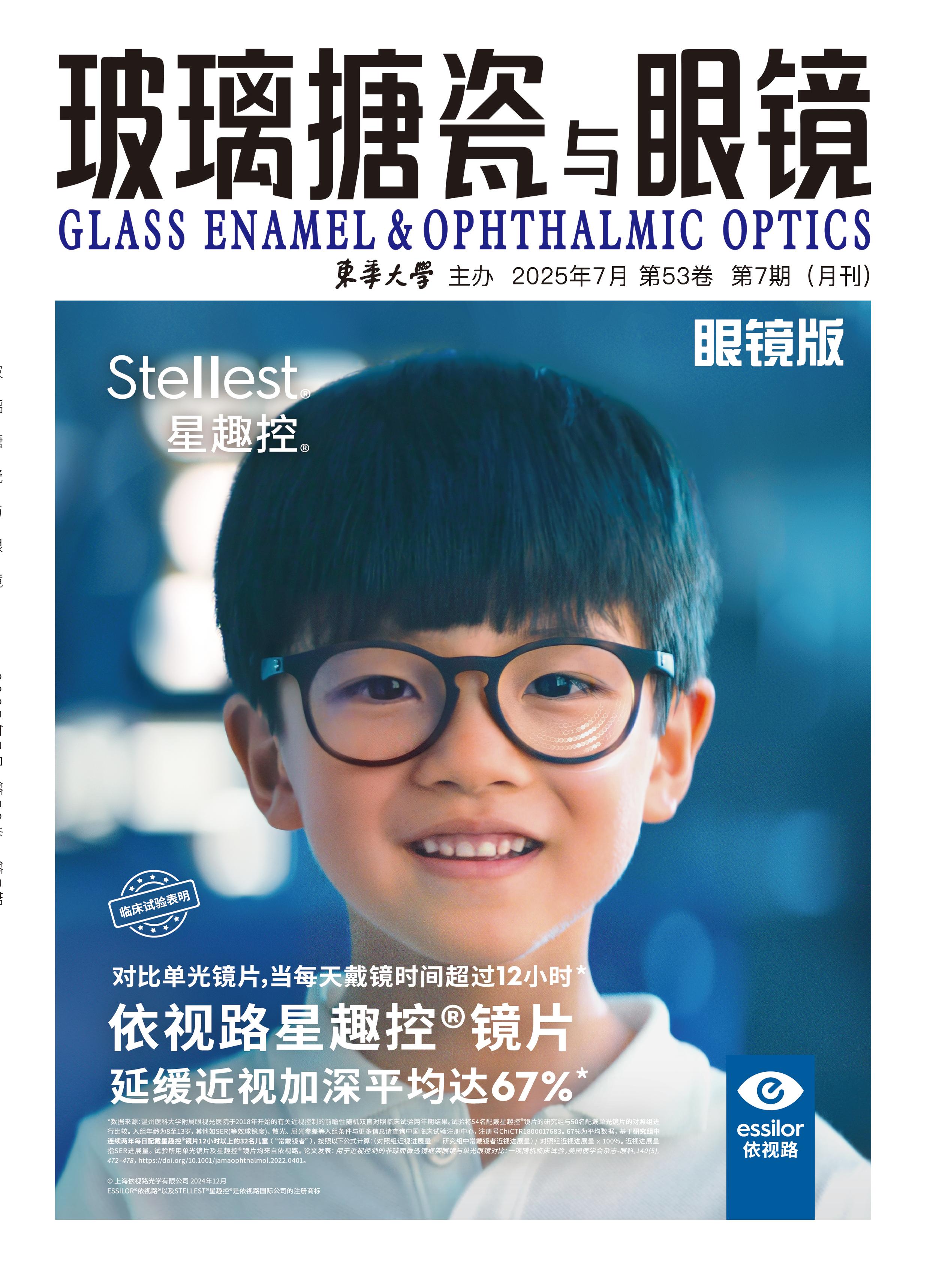
Through a retrospective analysis of 116 myopic patients aged 8 to 16 years who had been fitted with orthokeratology lenses, the changes in axial length were evaluated 6, 12 and 18 months after wearing the lenses, aiming to explore the changes in axial length and influencing factors of children and adolescents of different ages who wore orthokeratology lenses with an aspheric base curve design. The results showed that axial length changes at 12 and 18 months were negatively correlated with baseline age (r=-0.32, P<0.05; r=-0.30, P<0.05) but not significantly associated with baseline spherical equivalent, the minimum and maximum corneal curvatures (P>0.05). Among 8-12-year-old patients, the older the age, the smaller the change in axial length 12 and 18 months after wearing the orthokeratology lenses. These findings suggested that axial elongation after wearing non-spherical base curve orthokeratology lenses decreased with increasing baseline age but showed no significant correlation with baseline spherical equivalent or corneal curvature parameters.
To investigate the association between changes in astigmatism and retinal thickness in adolescents wearing myopic defocus spectacle lenses, a total of 60 adolescents with low to moderate myopia from June to December 2023 were selected, with the dominant eye (60 eyes) chosen for observation. They were randomly divided into Defocus Incorporated Multiple Segments (DIMS) lenses group, Highly Aspherical Lenslets (HAL) group, and Single Vision Lenses (SVL) control group. Follow-ups were conducted at 3 months and 6 months to observe changes in astigmatism and retinal thickness. Intergroup differences and the interaction effects between follow-up time and group were analyzed. The results showed the increase in astigmatism in the DIMS group was significantly higher than that in the HAL and SVL groups (P < 0.05). Retinal thickness in the 1 mm, 3 mm, and 6 mm macular central fovea regions increased significantly in all three groups (P < 0.05). The DIMS group showed uneven growth, the HAL group exhibited uniform growth, and the SVL group demonstrated uniform growth outside the 1 mm central fovea. A significant interaction effect was observed between follow-up time and group (P < 0.05). DIMS lenses may lead to increased astigmatism and uneven changes in retinal thickness, while HAL and SVL lenses have a more uniform impact on astigmatism and retinal thickness. This study provides clinical evidence for the personalized selection of myopic defocus spectacle lenses.
As an essential component of modern medical technology, the quality of talent cultivation in optometry technology is directly related to the improvement of the national visual health level. Currently, the cultivation of optometry technology talents is confronted with numerous challenges, such as the disconnection between talent cultivation and social demands, and the inconsistency between theoretical knowledge and practical operations. Based on the practical experience of Yongzhou Vocational Technical College, this paper analyzed the current situation and issues of talent cultivation in optometry technology and proposed an innovative path of "craftsman-teacher collaboration, industry-education integration, and diversified prosperity". The aim was to provide reference ideas and methods for the talent cultivation of optometry technology in similar vocational colleges and to help promote the improvement of the quality of talent cultivation in the optometry industry.
Given the persistently high global prevalence of ophthalmic diseases, the field of ophthalmic education faces significant challenges in addressing the shortage of specialized professionals. So this study explored practical pathways to enhance clinical skills and professional competence in ophthalmology students through self-directed learning teaching models. The proposed dual-path model, combining ideological guidance with self-directed learning, demonstrateed innovative advantages by cultivating professional skills while emphasizing ethical education, thereby enabling students to make responsible decisions in complex clinical scenarios. Evidence suggested that integrating ideological and political education with self-directed learning (SDL) not only strengthened students' professional expertise but also fostered the development of sound values, a positive outlook on life, and a strong sense of social responsibility. Furthermore, this model enhanced intrinsic motivation, critical thinking, and innovation. This shift toward student-centered educational paradigms not only nurtured social responsibility and professional ethics but also provided a theoretical and practical foundation for advancing ophthalmic education.
Based on GB/T 32166.2—2015, a comparative analysis of the sand-fall method, which was a commonly used testing method for abrasion resistance test of eye and face protection lens, was made on the differences between Chinese and European Standards, including instrumentation, test samples and test methods. Additionally, this paper studied the various factors that contribute to the outcome bias and provided guidance on the systematic uncertainty evaluation of testing method.
In ophthalmic surgical interventions for ocular diseases, astigmatism correction serves as a critical determinant in enhancing postoperative visual quality. Aphakic intraocular lenses (IOLs) and phakic intraocular lenses, as key ophthalmic lenses for astigmatism correction, are widely applied and each has its own functional characteristics. Aphakic IOLs, employed post-cataract extraction, replaced the excised opaque crystalline lens to address astigmatism induced by lens absence. In contrast, phakic IOLs were indicated for patients with preserved crystalline lens function yet requiring astigmatic correction, thereby maintaining natural accommodative capabilities. The evolution and clinical implementation of these ophthalmic lenses had diversified therapeutic options for astigmatism management in ocular surgery, substantially improving patients' visual outcomes. However, limited by their respective unique design requirements and application scenarios, these two types of ophthalmic lenses still have certain limitations in complex clinical situations, such as problems like position displacement and tissue compatibility. In order to break through the existing predicament, future research needs to further enhance the correction effect of the lenses while reducing the risk of complications.










